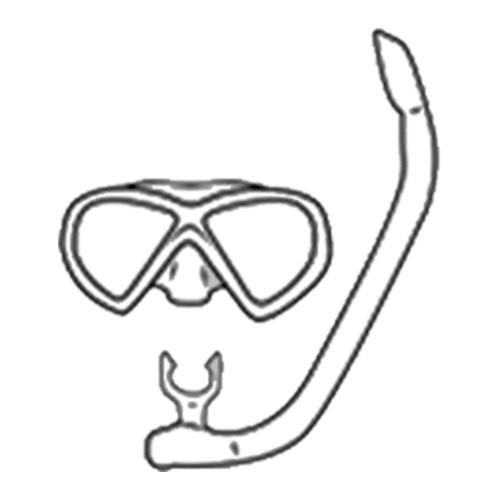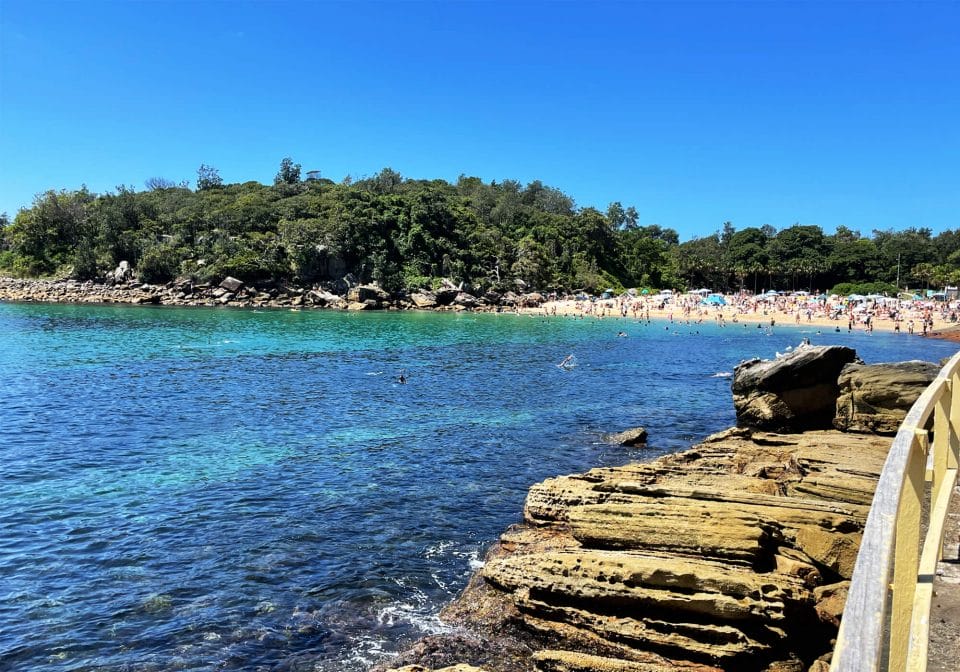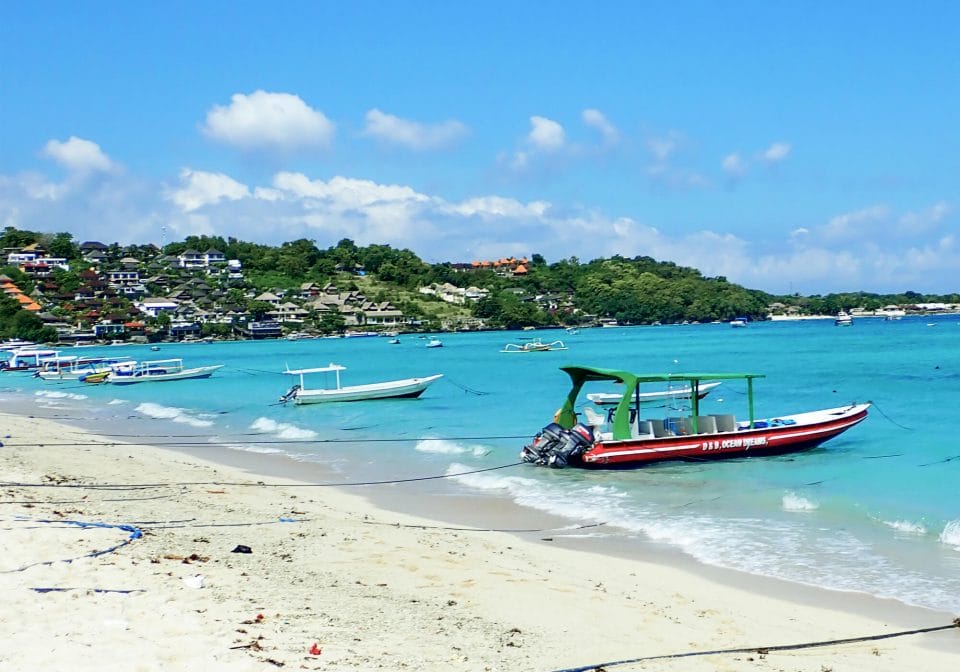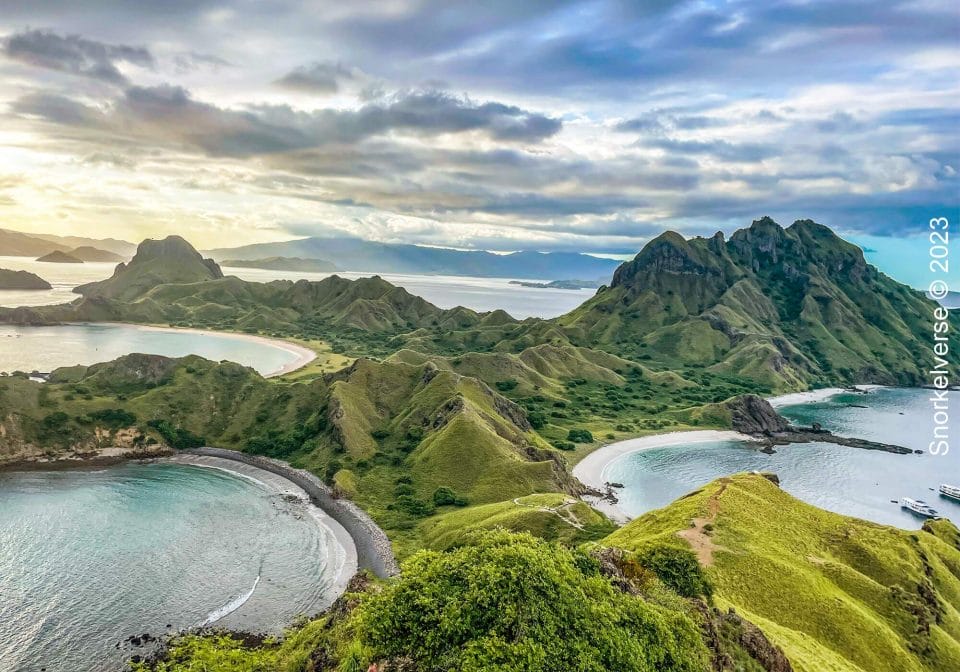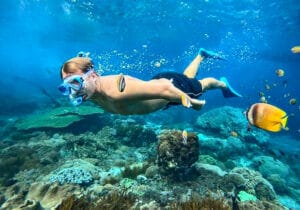A lot of coral and marine diversity, not very touristy, but this snorkel spot is suited to a more advanced snorkeler, as there is a current and the snorkel area isn’t marked out. Nui Beach and Loh Lana Bay snorkel spots are on the way from the Phi Phi Islands.
Pros
Cons

Snorkel Video

Snorkel Snaps

Snorkel Review
Highlights

Coral

1-4 Meters Average Depth

Good Visibility

Medium to Hard Difficulty

No Cafe’s on island

Tours $40 USD

Sea Urchins Present

Jellyfish unlikely
When:
Who:
Tour Cost:
Star Rating:
Cost:
On the first snorkel of my third snorkel trip around the Phi Phi islands traveled 40 minutes from Koh Phi Phi Don to the remote, uninhabited Bamboo Islands. I hired a longtail boat and paid ฿2,000 Thai Baht which is about $50.00 US Dollars, which was pretty expensive to pay alone. But I wanted to get out to Bamboo Island and have the boat to myself so I could explore different reefs.

We docked at the drop off about 300-400 meters from the sandy beach of the island. You can see the beach where tourists can pay a national park fee to enter. From the boat, I could see many tourists on the beach, but I didn’t go so can’t say whether it is worth it. There were numerous boats docked near the beach, however, we were the only boat docked to snorkel, meaning I had the whole coral reef to myself!
Top Tip:
The deeper reefs were packed with life, red fan coral, and moray eels, the closer you go to shore, the more boulder coral sections.
On my final day at the Phi Phi Islands, I hired a longtail boat to take me out to Bamboo Island, also stopping at Nui Beach on the return journey. It was about a 45-minute journey from the North side of Phi Phi Don beach to get to the North-side of Bamboo Island, passing Nui Beach, Loh Lana Bay, and Mosquito Island which has been closed since 2018. The ocean was flat with clear skies, I was unable to get to the island a few days before due to high waves, so I was hoping for perfect snorkel conditions!
Deeper Coral Reef
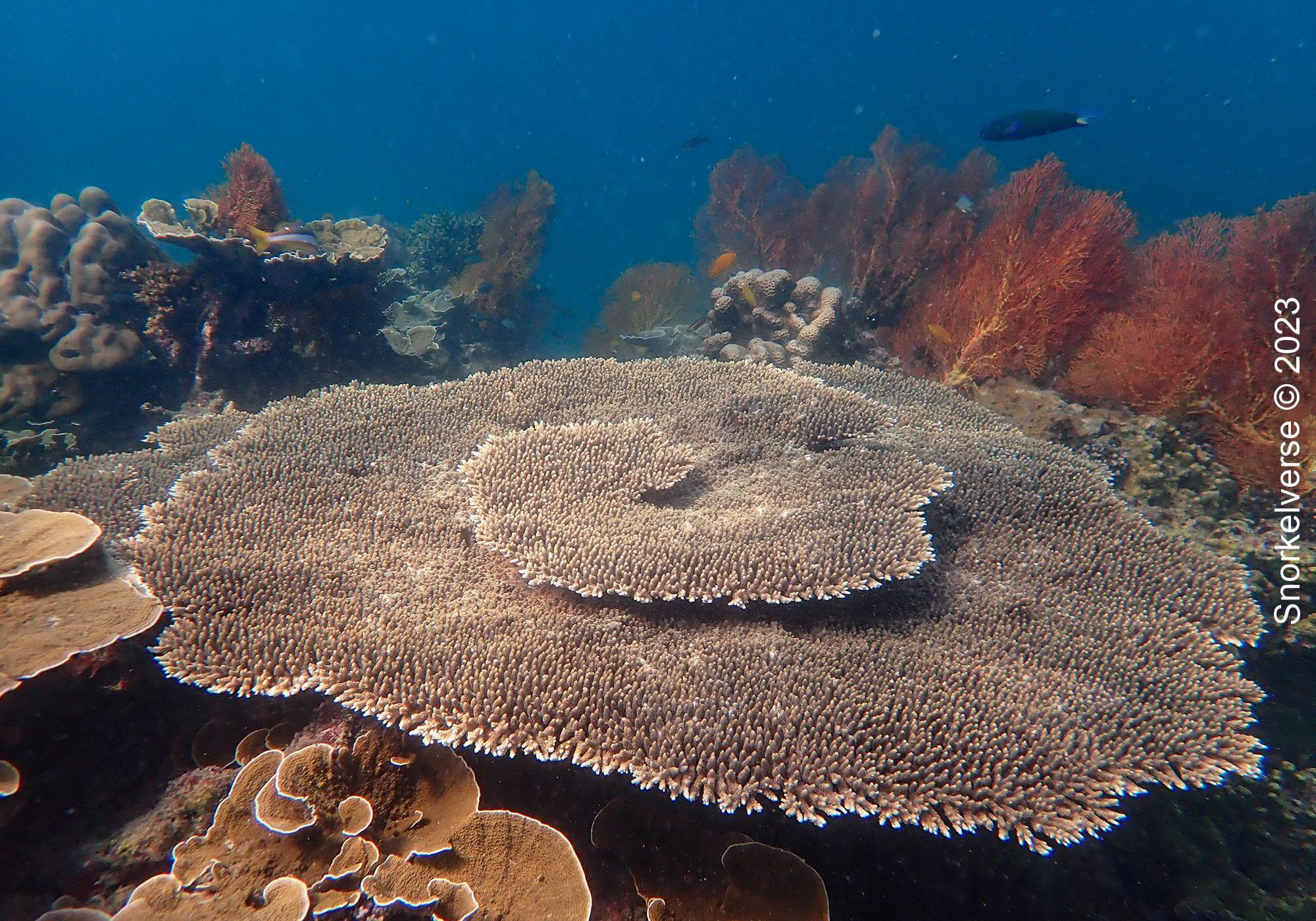
Shallow Coral Reef
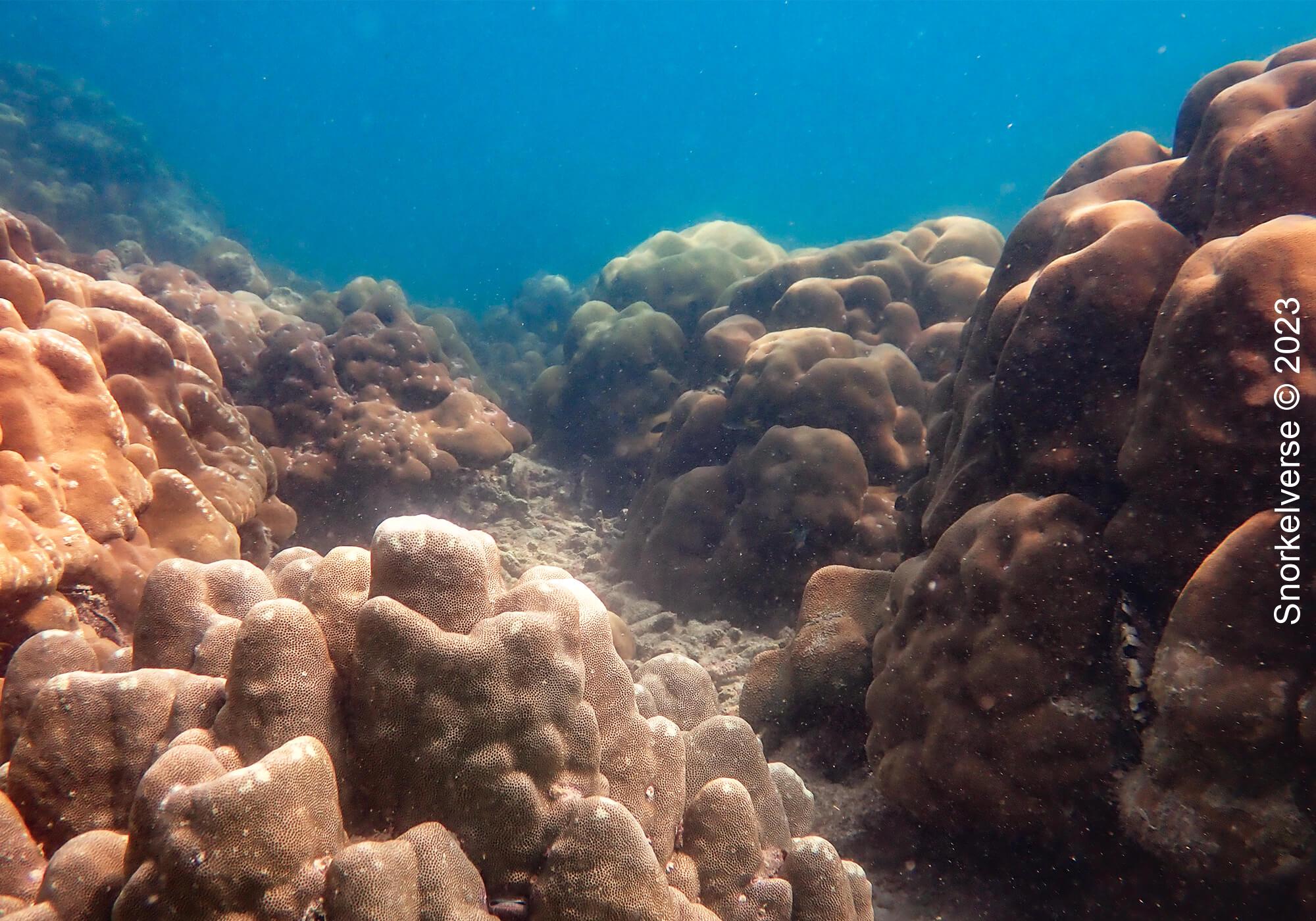
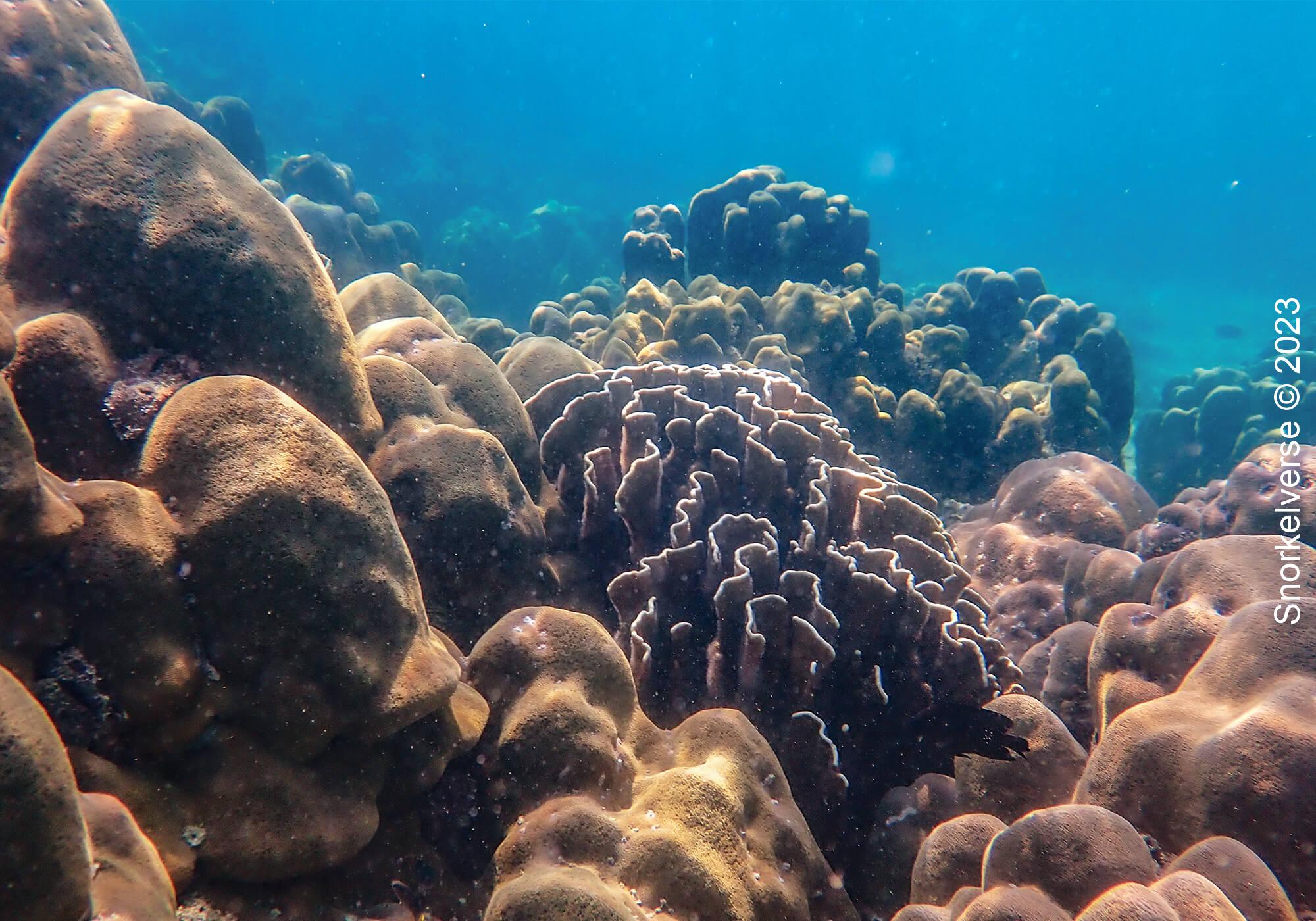

It’s an extra ฿400 Baht ($12 Dollars) to go onto the beach, which is a popular tourist attraction. I chose to stick to the snorkeling and not go on the beach, so can’t judge whether it is worth it. We docked up off the North of the island, just off the coral reef drop-off. There weren’t any other boats docked up for snorkeling, but many further along closer to the beach. You could see many tourists on the beach in the distance, but I could also see an empty coral reef, there weren’t any other snorkelers, which was paradise!
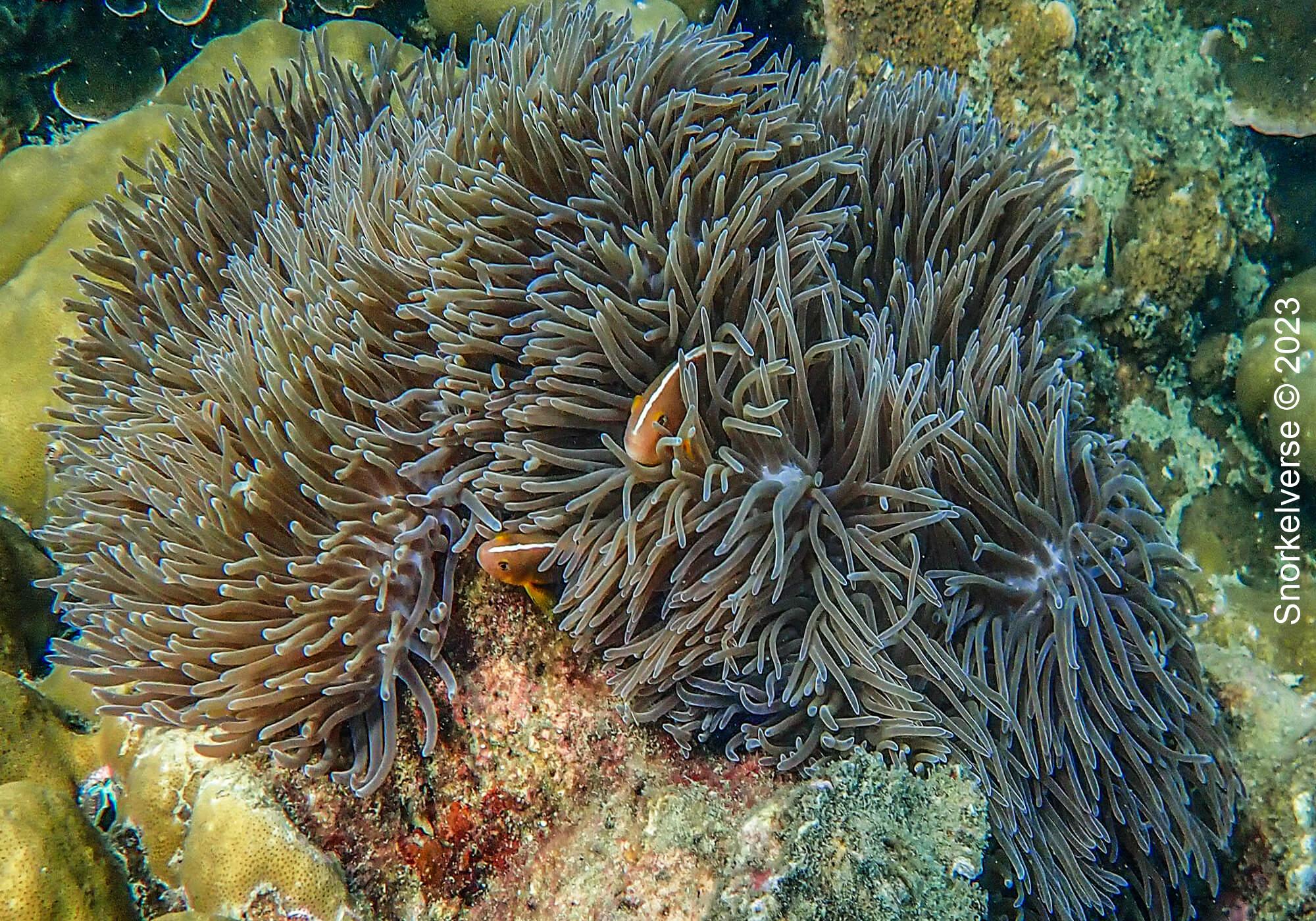
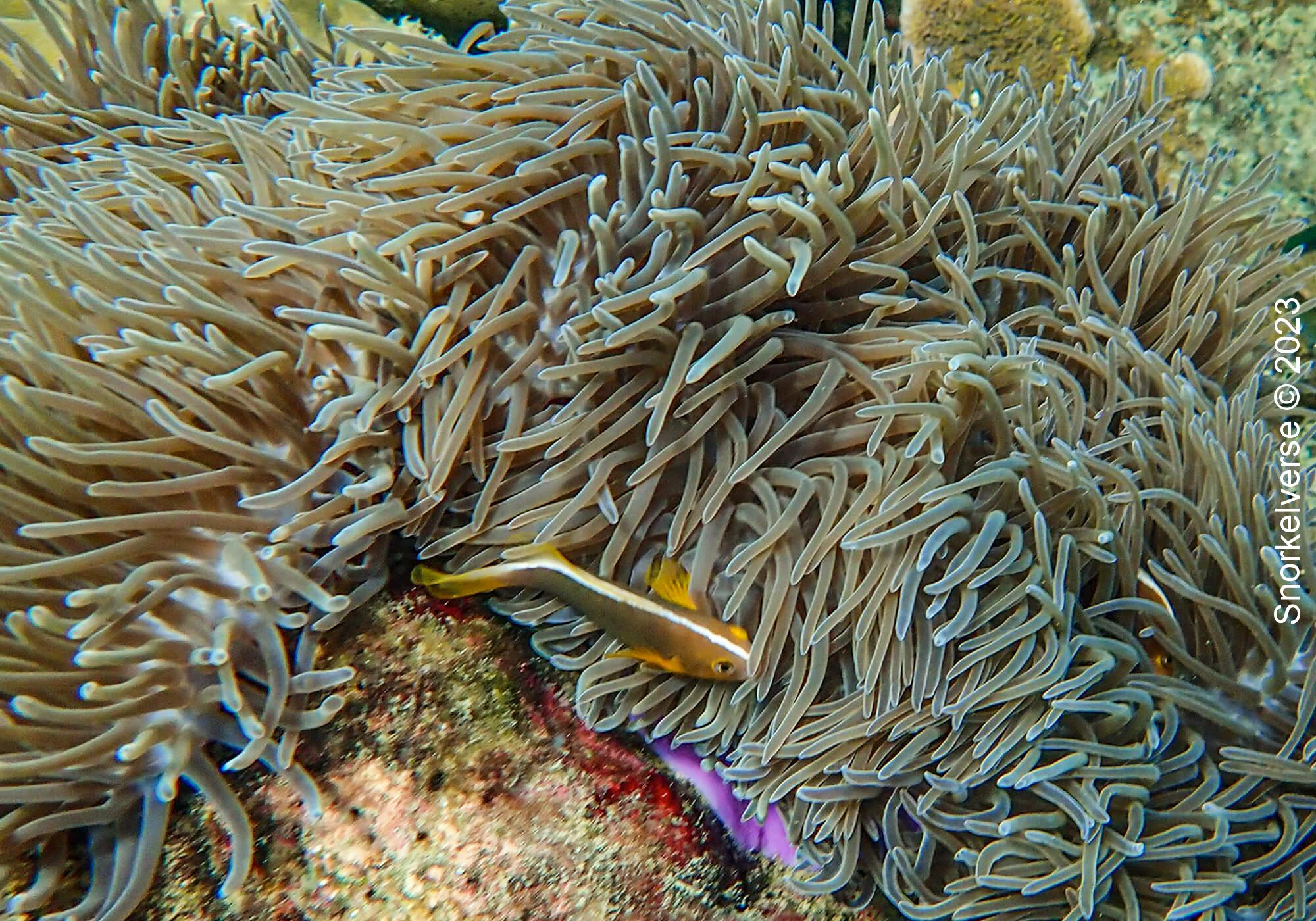

There was a small wave, and the beach of the island was approximately 300-400 meters ahead. I jumped in the water just off the drop-off and could see heaps of rock and coral raised up high, just below the surface, including Table coral, red Fan coral, and Elephant Ear coral. There was a lot of colour and life to the reef, the visibility was ok but got better as I swam further into shore.
As I started to swim closer to the beach, the water depth went from 3 meters to 1.5 meters, there was a lot of large boulder coral zigzagging along the sea bed. I spotted a Giant Moray chilling in between the reef, a very large Keeltail Needlefish in the deeper reef which chill at the bottom. I’ve enjoyed seeing red fan coral, I love the deep red colour and elegant, organic shape.
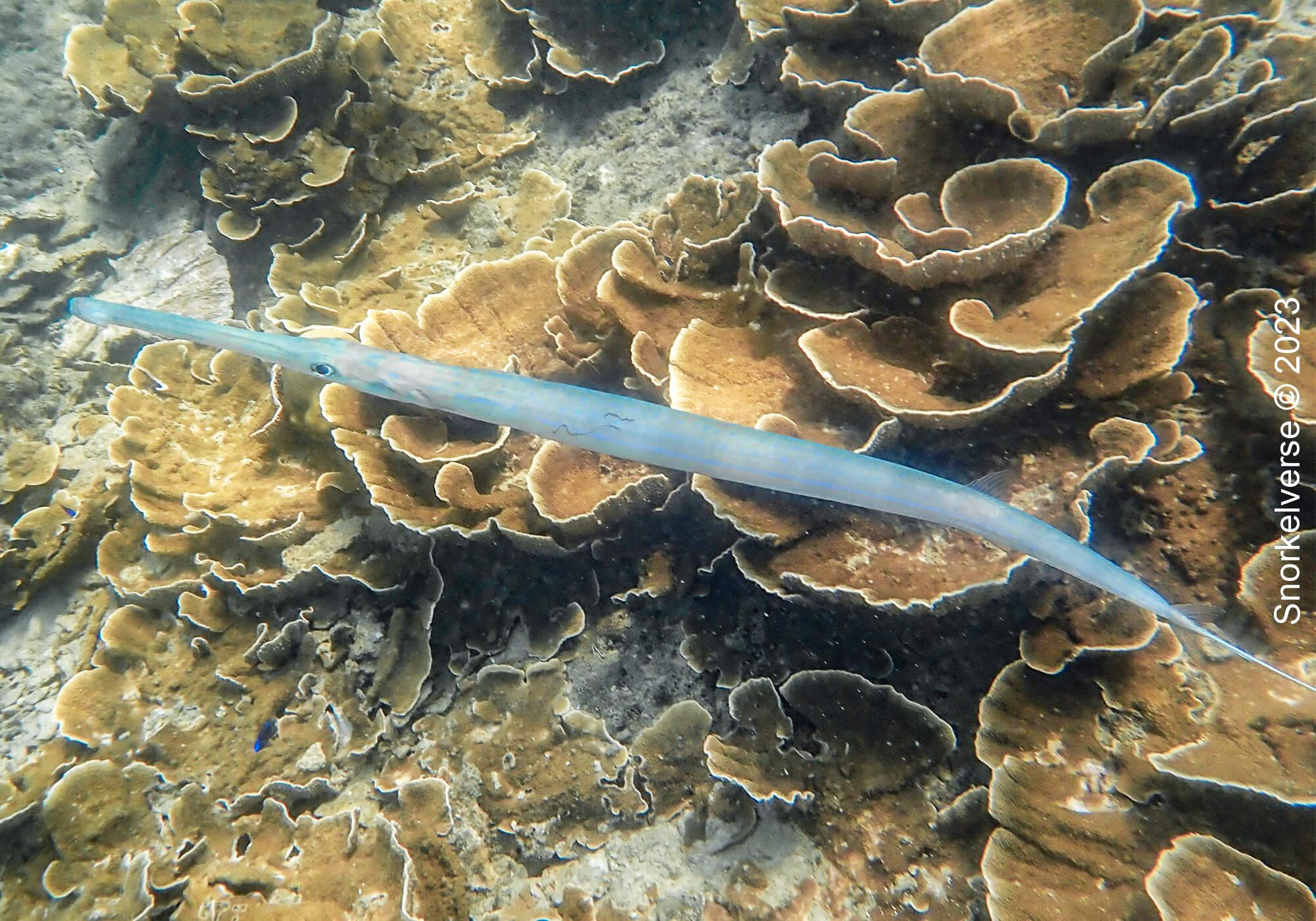
Safety Tip:
Be careful when swimming closer to the shore/beach if the tide is going out. The boulder coral creates a maze closer to shore and you can get trapped in these inlets if the water goes out. There is a current, flippers are advised, need to be a strong swimmer.
I swam further in over a sandy, dead coral patch where I joined a school of Parrotfish who were swimming with the current, which was moving at some speed! You know it’s a good reef when you see schools of Parrotfish swimming through it. Then I entered what I called Boulder City, there were mini mountains of this stuff everywhere. I saw these unusual fish, called Razorfish, which swim vertically.


I was very far into the maze of coral when the tide started to go in and I knew it was time to head back to the boat. It was at this point that I spotted in my periphery a striped object swimming at the bottom of the coral. After a second take, I realised it was a black and white Banded Sea Snake (1m), These snakes are generally shy, but extremely venomous and potentially fatal to humans.
I didn’t want to get too close to the snake or for it to get curious, so I decided to make my way back to the boat. As I was then shooting some GoPro footage of the deeper coral, I came face to face with the Sea Snake! It was at that point I went back to the boat.
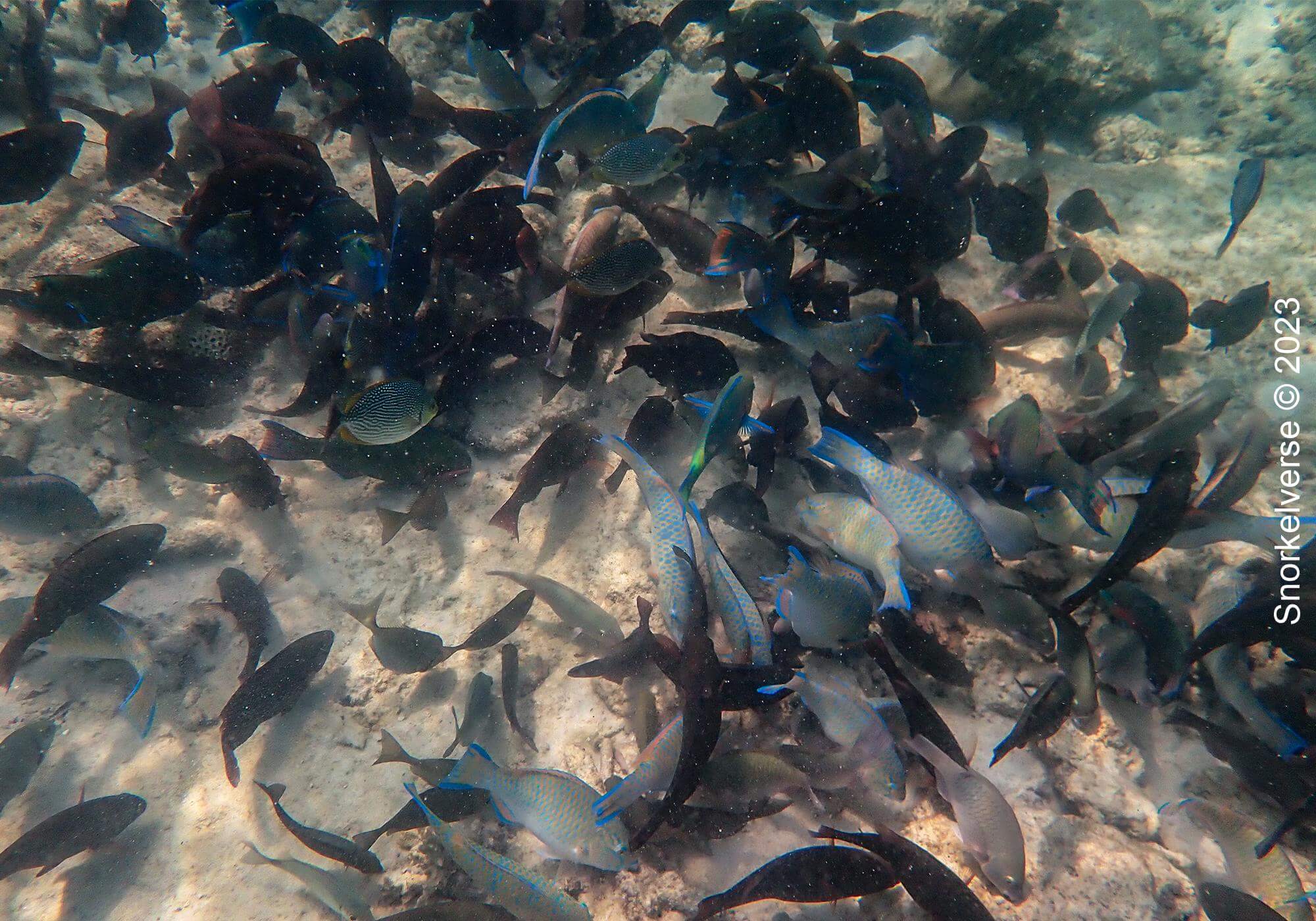
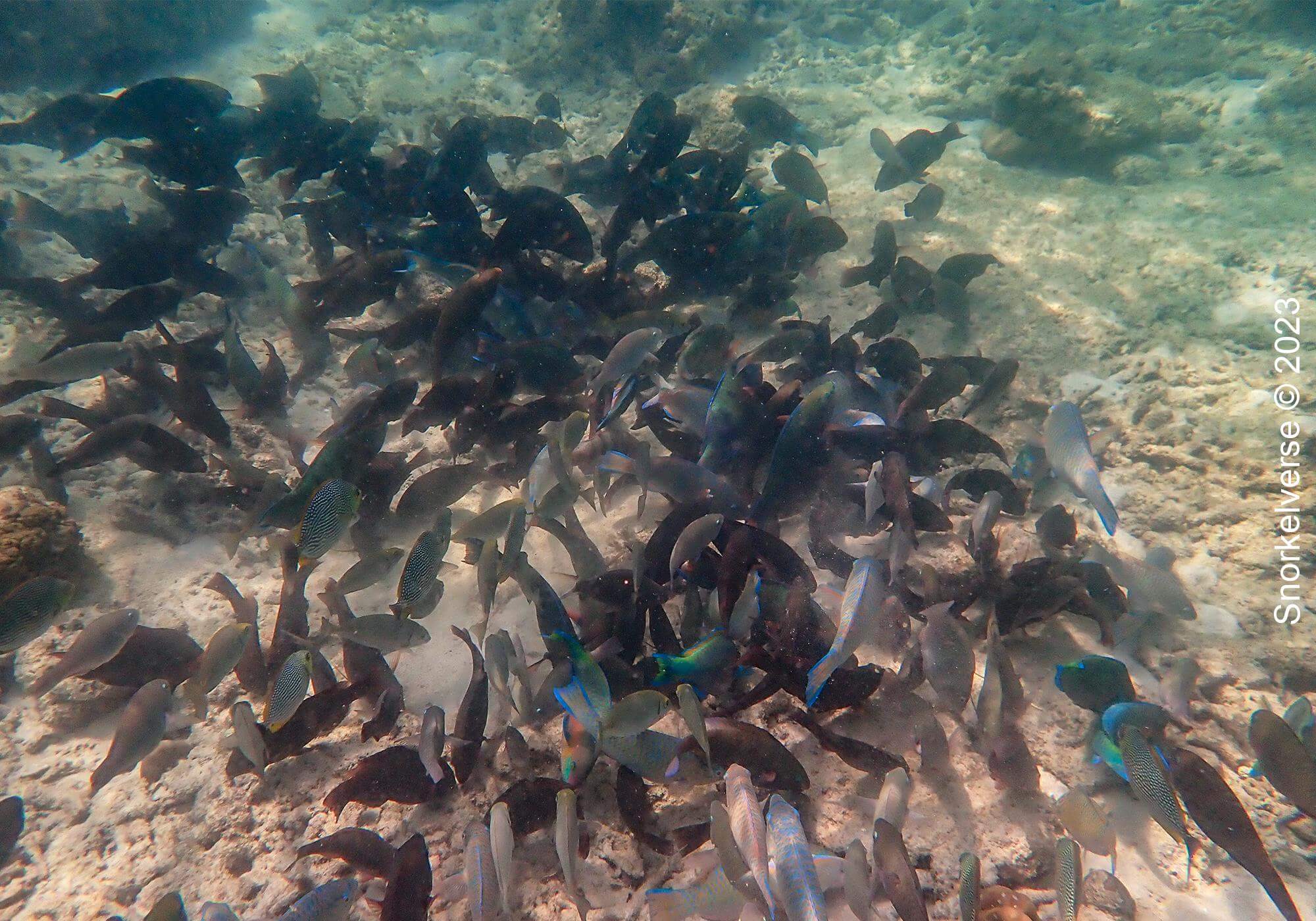
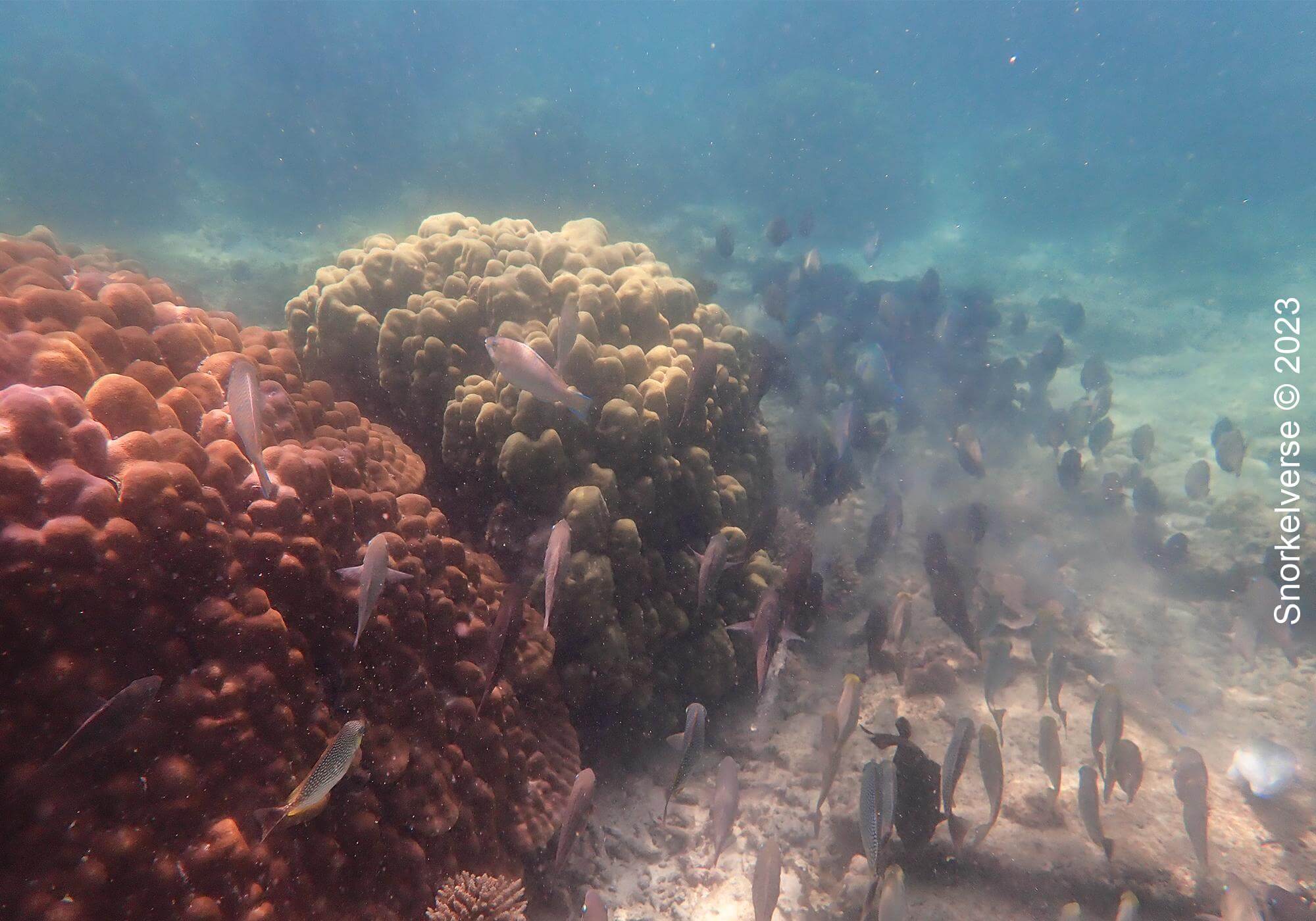
In my opinion, Bamboo Island was the best quality coral reef in the Phi Phi Islands and the most diverse marine life. Although it isn’t suitable for weak swimmers as there is a current, flippers are required, and navigating the coral can be a bit tricky. Also, the only way to enter the reef is from the drop off which is pretty deep and can have some waves.
Another popular snorkeling spot close to the island is Mosquito Island, but it has been closed since 2018. On the way, you can pass Nui Beach and Loh Lana Bay which are great snorkel spots to add to a trip.
Tour Guide Options
Some tours run from Phi Phi Don’s main island which is pretty cost-effective, you can hire private long boats on the main beach to take you out to the islands and you can decide where you go and negotiate the price, we paid approx $45.00 for 2 people, 3-4hrs. If you are staying in Krabi or Phuket there are Fast boat day trips to the Phi Phi islands to Pileh Lagoon/Bay, as well as Maya Bay just around the corner and Shark Point on Phi Phi Don.
Best Snorkel Spot
15 meters in from the deeper reef there is a variety of coral and this is where I spotted a Giant Moray Eel.

Best Time Of Year
The best time of year to snorkel at Bamboo Beach is in Thailand’s dry season running from October to April.

Popular Marine Life

Parrotfish

Moorish Idol

Giant Clam

Butterflyfish

Sergeant Major Damselfish

Golden Gregory

Rare Marine Life

Anemonefish

Giant Moray Eel

Banded Sea Snake

Coral Reef

Boulder Coral

Table Coral

Acroporidae Stoney Coral

Lettuce Coral

Slipper Coral

Fan Coral

Brain Coral

Blue Ridged Coral

What I Saw
(Seen on March, 2023)
| Banded Sea Snake | Giant Moray Eel |
| Nosestripe Anemonefish | Bluebarred Parrotfish |
| Eastern Triangle Butterflyfish | Blue Lined Grouper |
| Whitespotted Rabbitfish | Eightbanded Butterflyfish |
| Java Rabbitfish | Chameleon Parrotfish |
| Crescent Wrasse | Fringelip Mullet |
| Yellowbar Sandperch | Domino Damselfish |
| Behn’s Damsel | Two-Spotted Snapper |
| Blue-Green Chromis | Chinese Demoiselle |
| Brackish Damsel | Honeyhead Damselfish |
| Sergeant Major Damselfish | Golden Gregory Damselfish |
| Keeltail Needlefish | Giant Clam |
| Grooved Razorfish | Featherstar Clingfish |
| Brain Coral | Red Fan Coral |
| Table Coral | Lettuce Coral |
| Staghorn Branch Coral | Slipper Coral |
| Blue Ridge Coral | Honeycomb Coral |

Where is the Phi Phi Islands?
The Phi Phi Islands are located in the Adaman sea, in the South of Thailand. The Phi Phi Islands are made up of six islands, Koh Phi Phi Don is the largest and most developed island.
Bamboo Island Map

Frequently Asked Questions
Longtail boats or Speedboat are the only ways to access Bamboo Island on Koh Phi Phi Lee. The island is uninhabited and not accessible by any other mode of transport.
There are tours from both the Phi Phi Islands themselves, and the neighboring cities of Krabi and Phuket. The tours range in cost from $80-$100 from the cities, and $25-$45 from the Phi Phi Islands. I hired a longtail boat from Phi Phi and paid $45 US dollars for three snorkels over 3-4 hours.
The best time to visit Bamboo Island is in Thailand’s dry season, which runs from October to May.
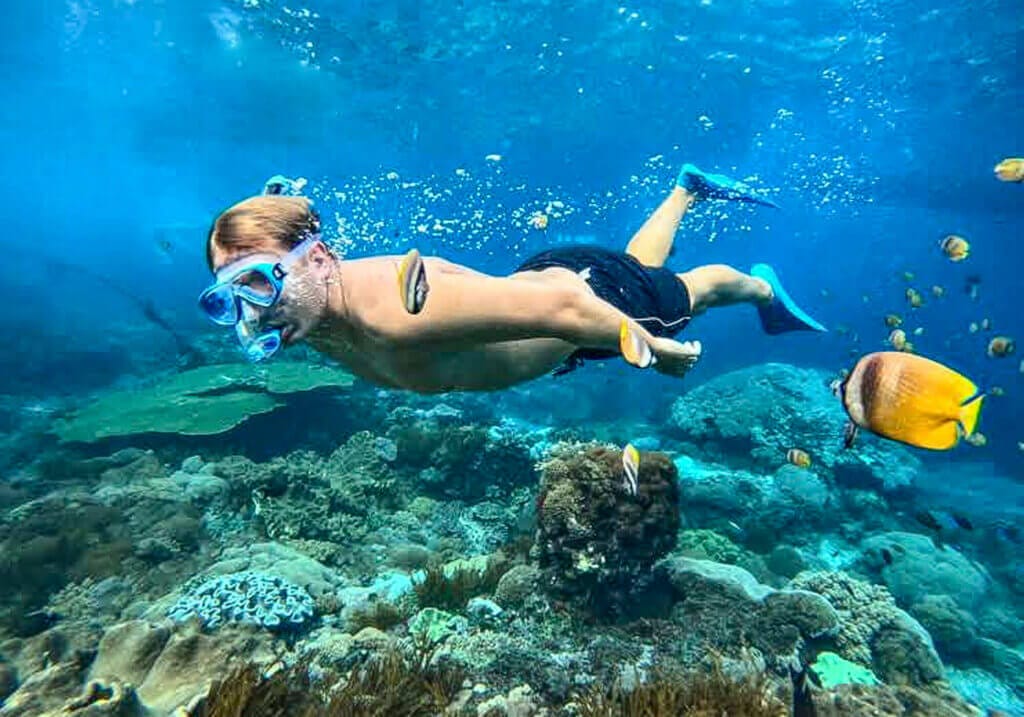
Luke
FOUNDER
Luke is a passionate snorkeler who started Snorkelverse to live his dream of combining his passions for snorkeling, marine life, protecting marine ecosystems, and helping others.
Phi Phi Islands Snorkel Reviews






